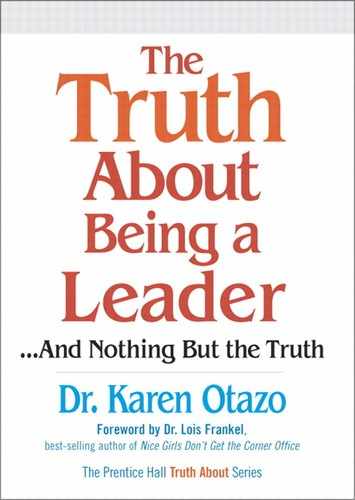Truth 5
A Resource-Based View of Your Organization Goes Beyond the Numbers
Keeping an eye on resources is essential to managing any organization, even a household. Yet some people are still surprised to suddenly find that their cupboards are bare or their bank accounts have no money because they haven't been watching the inflow and outflow of their resources.
When you move into a new leadership position, you naturally think to check on your organization's tangible resources: financials like revenues and costs, factories, buildings, equipment, systems, inventory, patents, and land. But it is also vital to realize that less-obvious resources like customers, learning, staff, innovation, capacity, inventory control, and morale can make or break your organization's success.
Think of each resource as a bathtub with two valves—one bringing in the elements of that resource, and one draining them. If the resource is staff, the in-valve is regular hiring, and the out-valve is staff leaving. If you don't pay attention to hiring and focused career development, you may find yourself with a depleted resource of good staff.
If you're developing more business, or new kinds of business, looking at the bathtub called staff forces you to consider how much inflow you need to be ready to staff new areas as they come up. Even if times are tough, it's best to make sure your important resources don't drain away to a critical level. It is a common mistake not to hire new people when you have a bad year or are short of funds. In cyclical industries like the oil business that have boom and bust cycles, when a downturn is over it becomes almost impossible to find people to staff the emerging boom.
Thinking of your resources as bathtubs helps you see that resources move in and out all the time. So you need to keep an eye on the level in every one of your tubs and ensure that you're putting enough into each of them.
Thinking of your
resources as
bathtubs helps you
see that resources
move in and out
all the time.
How do you identify all your bathtubs (resources)? You can get your team together, perhaps with some outside players like customers, consultants, and your board, to determine what makes your organization special. Open your thinking to the less-tangible resources as well as the obvious ones. For instance, you might not think of morale as a resource. Or brand. You might need to have a brainstorming exercise to determine what all your tubs are—all the things that make your organization what it is. These might include the people, the location, the value proposition of the product or service offered, and the advertising. Then determine what causes inflow and outflow for each resource.
For the resources of customers and learning, the tubs might look like this:

One important bathtub is reputation. Reputations can't be measured in numbers, but you certainly know if you have a good or bad one. When you realize that your reputation has drained below the "good" line, you can work on it. But first you have to realize this!
In gauging the levels of each of your tubs, you need to do fact-finding. Otherwise, you're using the intuition and feelings of just a few people. For instance, you can check on morale by doing a climate survey or check on customer attitudes with focus groups. Getting solid information from surveys and staff readiness reports from your leaders gives you a foundation for your decisions about where to support designated resources.
Taking a real resource-based view, rather than just getting a few facts and figures, is important. It's also tricky, because a lot of these things can't be measured in a bean-counting way. But, as with a bath, you don't have to count the gallons of water. What's important is whether your tub is comfortably full or worryingly empty.
